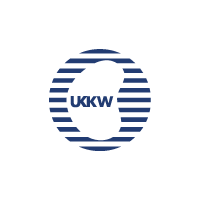Top Tips for Session Chairs
Please see below for important information on preparing for UK Kidney Week 2024.
- Introductions
- Timekeeping
- Managing questions
- The secretariat will send information about the presenters, presentations, format, and time limits prior to the session. The duration of presentations and Q&A will vary by session.
- Contact your co-chair early to discuss and align your approach to dividing tasks such as introductions, timekeeping, and handling Q&A.
- Review speakers’ names, bios, and abstracts before the conference. These are available from the secretariat and in the session details form.
- Familiarise yourself with any unfamiliar speaker names. Check online resources for pronunciation tips and practice saying the name out loud.
- Prepare a brief summary of the session based on the abstracts.
- Prepare a few questions for the presenters in case there are no audience questions.
- Check the session details form for information about presentation and Q&A time limits – these will vary between sessions. Create a schedule of when each presentation should begin to ensure that all speakers get equal time. Account for introductions and transitions.
- Check your email regularly prior to the session for any important communication.
- Arrive at least 10 minutes early to greet speakers. Introduce yourself to the presenters and make them feel welcome. Ensure that you can pronounce their names correctly for introductions, remind presenters how much time they have, and communicate how you will keep time.
- Example: Hold up 2 fingers for 2 minutes left, 1 finger for 1 minute left. When time is up, politely thank the presenter and transition to Q&A or the next presenter.
- Check to make sure name cards are accurate, water is available for speakers, presentations are loaded, and equipment is working. There will be a technician available to help.
- Encourage presenters to practice speaking into the microphone and adjusting it to the appropriate height prior to the session.
- Remind presenters that this is a networking opportunity and that they can request to follow up with audience members if a question in Q&A requires further research or discussion.
- Have a smartphone or watch ready for keeping time.
- Begin the session promptly to respect attendees’ time and to keep on schedule.
- Give a short introduction to the session.
- Introduce yourself and the presenters.
- Ask audience to silence their mobile phones.
- Establish ground rules for Q&A, including format and time limits for questions and answers.
- Communicate that the goal of the Q&A is to give as many people as possible the opportunity to ask questions.
- Encourage diverse participation by fostering an inclusive and welcoming environment. This can help to put audience members who may be nervous about asking questions at ease. You can do this by specifically inviting questions from students and early-career researchers, from underrepresented groups, and from across the many professions represented at the conference.
- Keep track of time using a smartphone or watch.
- Use the timekeeping system you communicated to the presenters.
- Manage transitions between presentations smoothly. Transitions are often smoother if the presenter reads the title and topic of their paper rather than the chair.
- Ensure all presenters have a fair opportunity for questions by being mindful of the allocated time for each presentation and the overall session.
- When transitioning to Q&A, remind audience members and presenters of the ground rules from your introduction, especially to be concise to allow for as many questions as possible.
- Help the speakers and the audience feel comfortable and stimulate discussion during the question time.
- Ask audience members to state their name and affiliation before asking a question.
- If there are more questions than time will allow, it may be necessary to ask the presenters to collect several questions, prioritise them, and address them together.
- If no audience questions, allow presenters to ask each other questions, use prepared questions, and encourage audience members to ask any questions as they come up.
- If one question or audience member is dominating, courteously move the Q&A forward. "We could spend a lot of time on that, but we want to hear from more people…"
- Conclude on a positive note by thanking presenters and the audience for their participation and enthusiasm.
- After the session, let the presenters know how important their presentations were to the success of the session.
- Encourage the presenters to provide each other with constructive feedback and to stay in contact, given their similar specialities and research interests.
- Help presenters feel supported and valued by providing constructive feedback and asking any questions you have that were not addressed in the Q&A.
